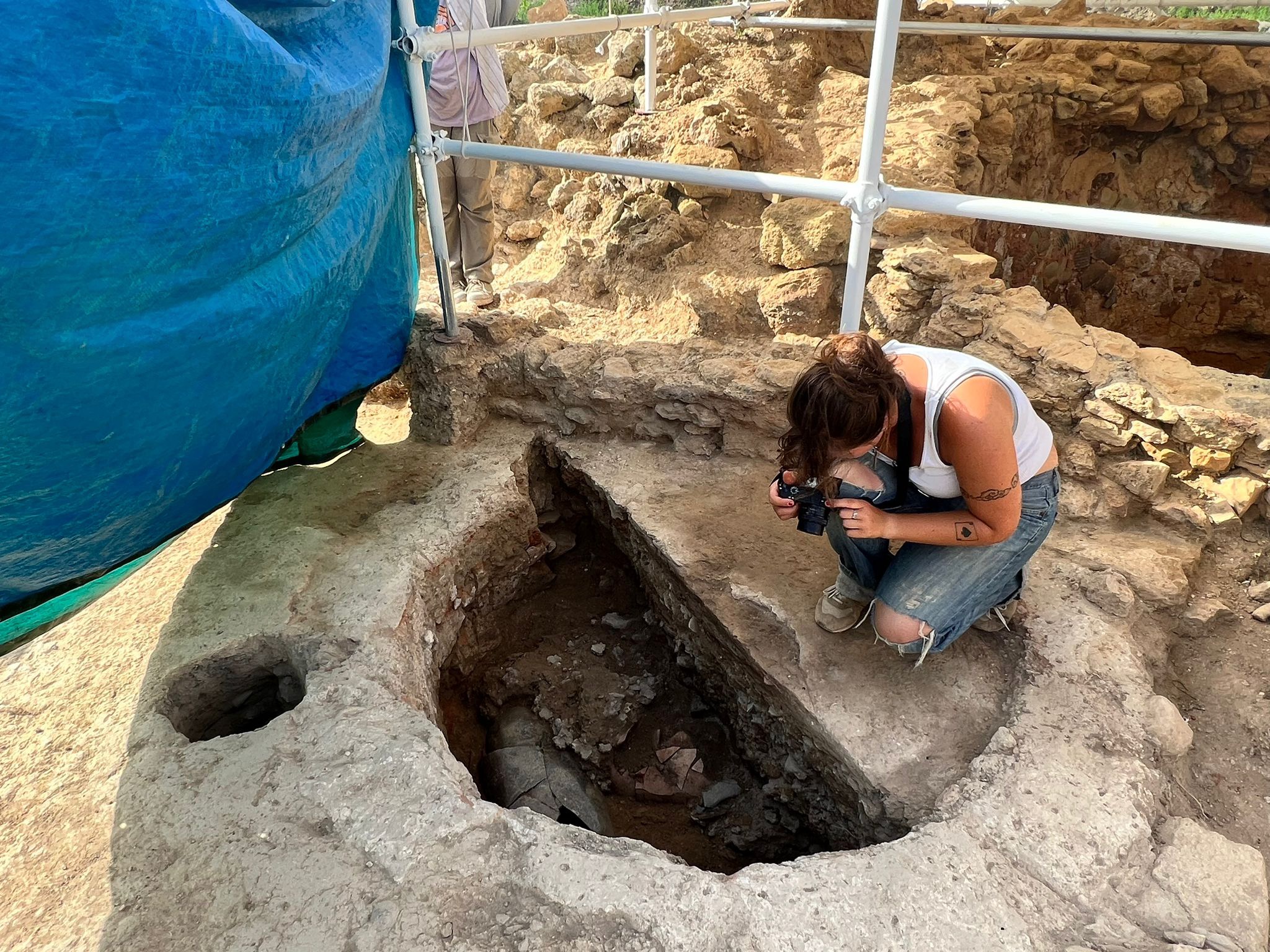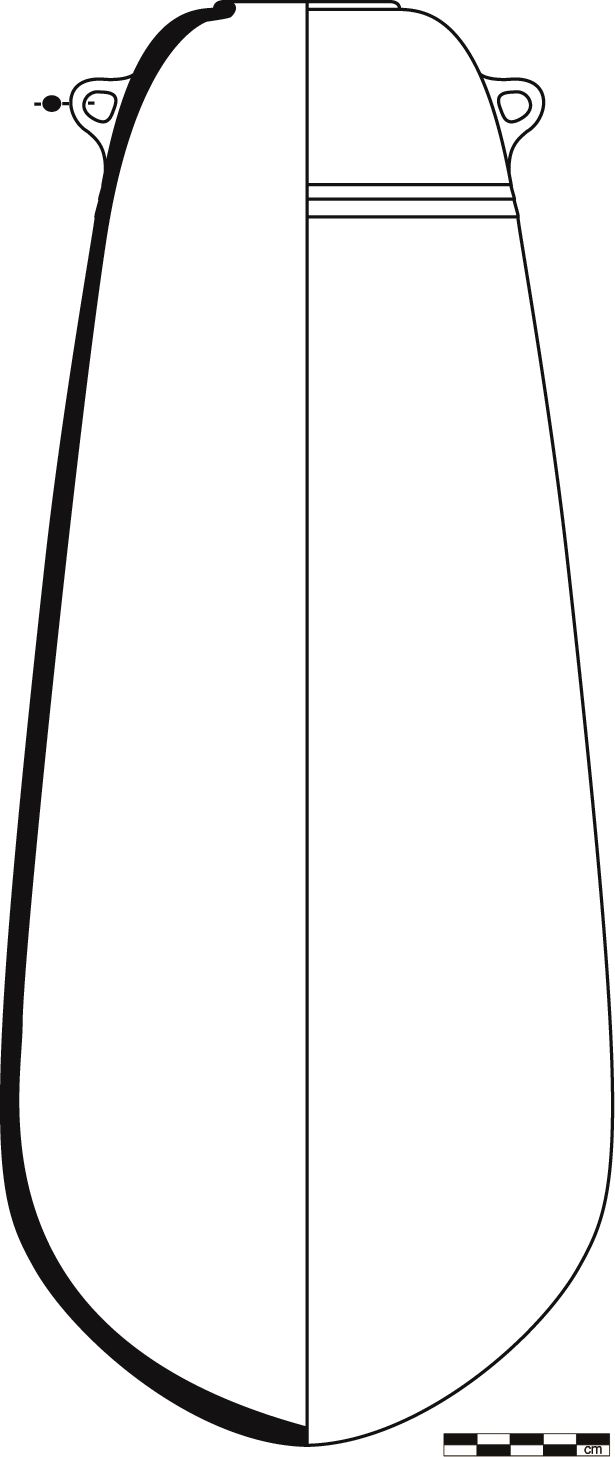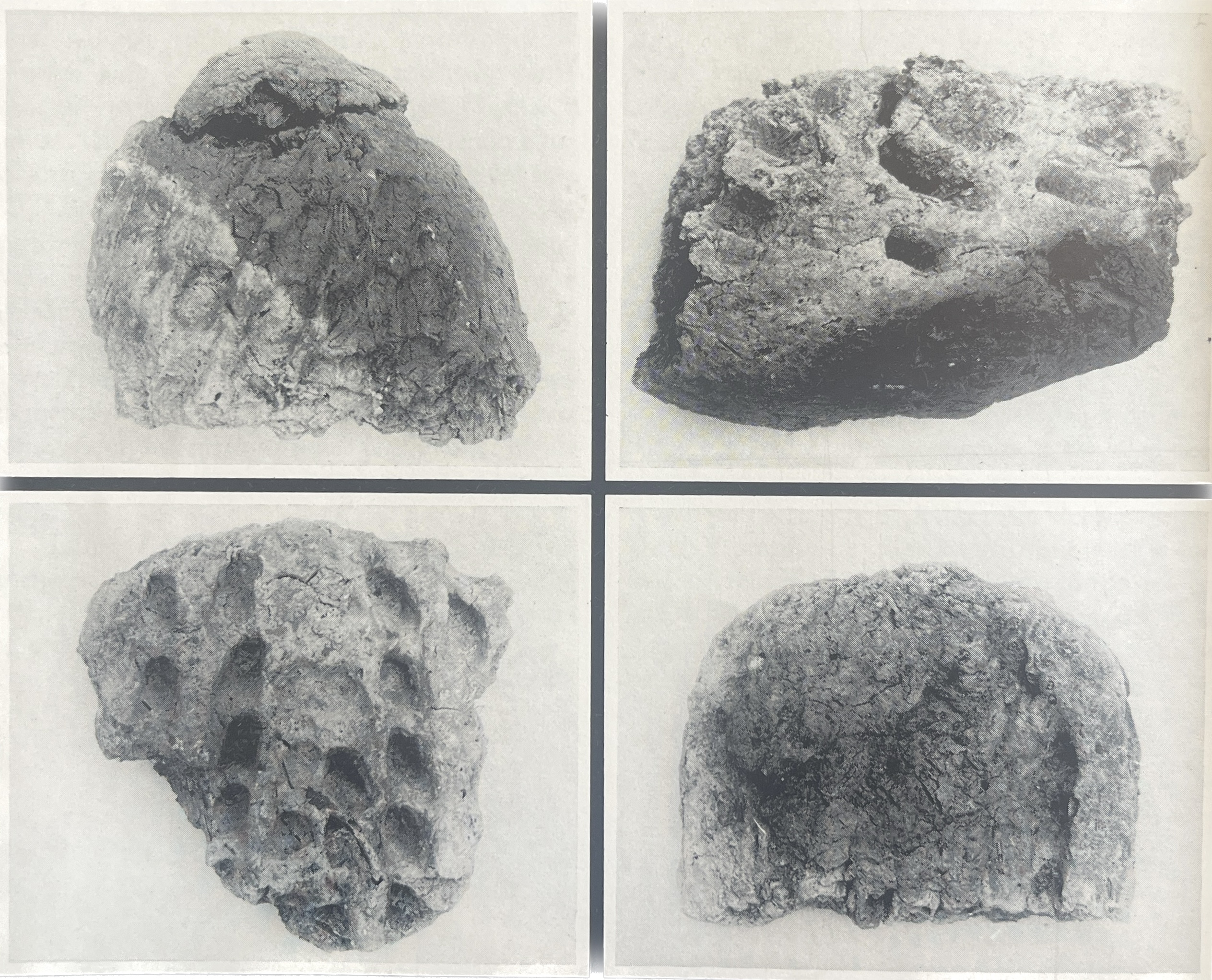Explore the Kiln
Big Picture

Left: Taking pictures of the kiln in order to create orthomosaics and 3D models
Right: Video timelapse of the daily orthomosaics of the kiln
As stated on the home page, my responsibilities on Mozia revolved around the photogrammetic modeling of the excavations and features inside of them. Every morning I would fly a drone over N23, N15, N27, and K64, producing about 50-100 pictures for each. Similary, throughout the day I would use a camera to take pictures of individual features inside each area, which you can see me doing with the kiln in the above left photo. Using a total station, which is essentially a gps that can be accurate down to the centimeter, the archaeologists would take points in their areas, and I would use those points to integrate geographic data into the models. So, in the afternoons, I would take all the images and GPS points and run them through Metashape, which is a software for photogrammetry. For the larger areas, I made orthomosaics, which are images produced by creating a mosaic from a collection of photos. These images are data heavy, detailed, and carry geographic data, meaning they can be be mapped in a GIS software. You can see lighter versions of these on the home page, as well as in the timelapse above, which shows all of the daily orthomosaics for the kiln. For orthomosaics, it's the birds' eye view that is the most important to capture, but for the 3D models shown below, there needs to be a different technique. Throughout the dig, I also worked on 3D modeling smaller features such as pottery, cremations, and the kiln. For 3D modeling, you need to take pictures from every angle and close enough to capture finer details. Each photo needs a two-thirds overlap with the one before and after, so the images can be pieced together accurately. From there, building the model just takes time.
Photogrammetry can be beneficial to archaeological science in a number of ways. Excavation is inherently a destructive act; once things are unearthed, it can't be undone. Context for finds can easily be lost, and without good records, it's difficult to go back and look for information. The north-east sector of the island is a good example of this phenomena, because UNIPA's goal is to gather certain information that previous excavations did not. So, it is really important to record everthing, at every stage, and photogrammetry can make detailed documentation easier. The results are often more accurate than a description or drawing. Moreover, when you visit a museum or even tour archaeological ruins, you are always seeing artifacts or structures post-excavation, often removed from the context in which they were found. The beauty of photogrammetry is that 3D models, if done well, can get you as close to an in-person experience as possible, allowing you to see artifacts or features in situ, throughout their excavation. This could be useful to the archaeologists who need to look back on their work, scholars who need to research otherwise inaccessible materials, or the person who has an interest in the history, but can't get to it.
So, for those with an interest, here's the kiln that was exacavated in K64.
The kiln modeled on 6/20/23, 6/30/23, and 7/6/23 respectively.
Following the Excavation
As a potters' workshop, Area K is full of things relating to this type of industry, whether that's amphorae, clay deposits, unbaked pottery, or kilns (of which there are a few). This kiln was discovered just north of a larger one that had been previously excavated. However, it started at a deeper level in the earth and was partially cut off by its larger counterpart, so it is certainly older. The circle of bricks making up the outer wall made it distinguishable from the surrounding earth. Initially, just a section of the kiln was dug, preserving the layers of the fill for the purposes of dating, record keeping, and chemical tests. Being able to look at the stratification of earth and the artifacts that may be in each layer can help with answering certain questions like, for example, when and why the kiln was filled in. However, the archaeologists reached a layer containing large jars, which are likely transport amphorae, which extended into the undug section. In order to dig deeper, the amphorae have to be completely recorded in situ and then removed for conservation. This meant that they would need to dig the other section to reach the layer with the amphorae. Once that was done, they continued to follow the section all the way down.
In the models above, you can first see the kiln at the initial stage of excavation, with just the beginning of a section. The second model shows the kiln 10 days later, with the amphorae exposed. The last model shows the kiln about a week later, at the end of the excavation. At the bottom of the page, there's a model of the kiln at the end of the season displayed from the side. When you rotate it, you can see the color variation and layers in the brick as though from the inside. The kiln will most likely continue to be excavated next summer. Since it is very much an open exacavation that could be damaged/contaminated if left open to the elements, it had to be filled in with things that could later be removed.

